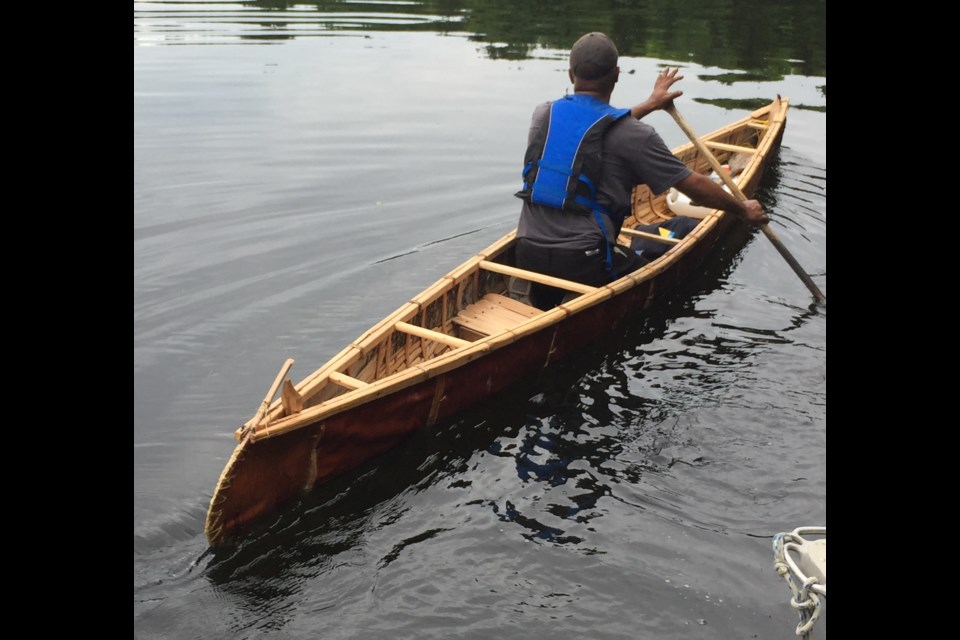John Harrison wants to bring back what he views as a nearly forgotten art.
For the past eight years, the Orillia native has spent eight months a year living in the bush near Algonquin Provincial Park as he hones his skills at making traditional birch-bark canoes.
“The whole project has been about releasing a craft that’s been out of favour,” he said, noting that craft involves building canoes on the ground with three simple hand tools, sustainable harvesting and following a traditional process.
“I show my canoes and people are in amazement, but they often don’t see the art and this is the original (Canadian) art,” the 53-year-old said.
“It’s a really good project for arts, culture and history because it all ties in with that…Canadiana.”
Harrison, who has a fine arts’ university degree and is also an accomplished musician, is just finishing building 17- and 18-foot racing canoes and would now like to build a racing canoe side-wing as his next project.
“That original Canadian idea still hangs out in every canoe that you see today,” he said, noting he sold a 12-foot trapper canoe that’s now on display at Rama’s Bare Butts Smoke shop.
Harrison, who lives in a large tipi on the shores of Kimball Lake when not in the city, takes about three weeks to build a canoe.
“It takes a certain consistency of environment to produce the right tree,” Harrison said, noting he first uses a ladder to climb to an appropriate level before harvesting the bark from mature trees.
“You want 15- to 16-inch diameter (trunks) since with a tree like that you’re getting a quarter-inch of bark. I’m strictly doing a sustainable thing. I’m a surgeon when I’m on that tree and can get three canoes out of one tree. I pay homage to the tree.”
Harrison’s passion project has also led to displays, talks and workshops at Culture Days, Orillia Public Library, Rotary Club of Washago along with Cape Croker and Rama powwows.
As well, he teaches students at Rama’s Mnjikaning Kendaaswin Elementary School how to build a one-foot canoe and also wrote lesson plans for a canoe program.
“The last day, we had a regatta down the Black River. They had so much of a connection to what they built.”
But Harrison comes by his love of building Canada’s traditional watercraft honesty. His father Ron Harrison was a machine-shop teacher at Park Street Collegiate Institute from 1962 to 1995 and started the school’s Outward Bound program in the late 1960s.
“I was always around it; the essence, respect and joy of being in nature,” Harrison said, noting his father also helped students learn to build canoes.
“My father has built 86 canoes in cedar strip or fibreglass. I’ve built six, so I have a long way to go.”
Harrison has also been busy writing a collection of essays for an upcoming book entitled The Last Algonquin, which is a guide on how to build a traditional Canadian canoe that also features insights into life, Indigenous history and one’s place in nature.
“What technology utilizes birch bark’s water repellent nature, sewn in a blanket with spruce roots, structured internally with split cedar ribs, and sealed with spruce gum housing?” one essay excerpt asks before pointing out the canoe was created by combining three existing First Nations’ technologies found in other traditional items like snowshoes and toboggans “for travelling over frozen water.”
Harrison said he loves living in his tipi and being one with nature.
“I get so much peace and quiet for weeks at a time up at my site,” he said.
“I’m taught by nature and you renew your senses of sight, smell and sound. I get a better balance then when I was just living in the city.”
